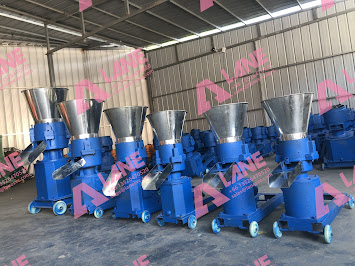How an Agricultural Waste Composting Production Line Boosts Sustainability
LANE specializes in efficient composting systems designed to streamline processes and ensure maximum output with minimal input. Whether you're a small-scale farmer or a large-scale agricultural enterprise, our agricultural waste composting lines can be customized to meet your needs.
Why Invest in an Agricultural Waste Composting Production Line?
Types of Agricultural Waste Suitable for Composting
Not all organic waste decomposes at the same rate, but most agricultural byproducts can be processed in a composting production line. Below are the most common types of raw materials used:
| Waste Type | Description | Decomposition Rate |
|---|---|---|
| Animal Manure | Cow, pig, chicken, and sheep manure – rich in nitrogen. | Fast (2-4 weeks) |
| Crop Residues | Straw, corn stalks, rice husks – high in carbon, needs balancing with nitrogen. | Moderate (4-8 weeks) |
| Fruit & Vegetable Waste | Spoiled produce, peels, and trimmings from farms and markets. | Fast (2-4 weeks) |
| Aquatic Plants | Water hyacinth, algae – useful for moisture retention. | Moderate (4-6 weeks) |
| Food Processing Waste | Bran, soybean meal, brewery grains – nutrient-dense. | Fast (2-3 weeks) |
| Forestry Byproducts | Sawdust, wood chips – good for aeration but requires extra nitrogen. | Slow (8-12 weeks) |
For optimal composting, a balanced carbon to nitrogen ratio (C/N) (25-30:1) is essential. The LANE composting system automatically adjusts the mix for efficient decomposition.

How Does an Agricultural Waste Composting Production Line Work?
Step 1: Material Collection and Pre-Treatment
Agricultural waste is collected and pre-processed. Large stalks are crushed to increase surface area for microbial activity. High-moisture manure is passed through a solid-liquid separator to adjust water content.
Step 2: Mixing for Optimal Fermentation
Different waste materials are blended to achieve the proper carbon-to-nitrogen ratio. LANE’s mixers ensure even blending, and microbial inoculants can be added to speed up fermentation.
Step 3: Composting and Fermentation
The heart of the process. LANE’s crawler type compost turner or groove type compost turner regularly aerates piles, maintaining ideal oxygen levels and temperature (55–65°C) to kill pathogens and weed seeds.
Step 4: Post-Fermentation Processing
Once fermentation is complete, compost is crushed and screened to achieve uniform particle size. Oversized materials are recycled back into the process.
Step 5: Granulation, Drying and Cooling
The compost is granulated for easier application and better market appeal. Granules are then dried and cooled to maintain stability.
Step 6: Packaging
The final product is packaged in bags for storage and sale. LANE’s automatic packaging machines ensure accurate weighing and efficient sealing.
The Future of Farming Lies in Waste Recycling
For more details, please feel free to contact us.
Henan Lane Heavy Industry Machinery Technology Co., Ltd.
Email: sales@lanesvc.com
Contact number: +86 13526470520
Whatsapp: +86 13526470520





评论
发表评论